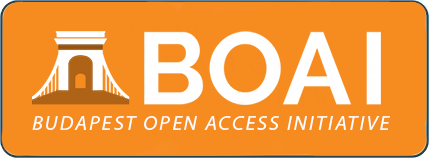The Waqf Integrated Financial Instrument of Pension Model in Malaysian Social Security: A Conceptual Proposition
DOI:
https://doi.org/10.33102/jmifr.v17i1.259Keywords:
Pension scheme, Waqf, Ageing population, Savings, Employees’ provident fundAbstract
The ageing population trend is a problem for almost all countries in the world. In Malaysia, the issue is exacerbated by insufficient employee savings to face retirement. The majority of Malaysian employees have savings no more other than mandatory savings of the Employees Provident Fund (EPF) account. On the other hand, waqf has many roles in the country’s economic development as it helps to improve welfare of the community. This paper aims to connect the gap between pension and waqf issues through a new proposed Waqf Based Pension Model. This study uses descriptive analysis to propose a Waqf Based Pension Model. This study employs library research approach to collect secondary data from journal articles, books, reports, and websites that contain existing pension schemes and waqf. This new model improves weaknesses in the existing pension scheme using annuity-based calculations. This study finds that productive waqf assets may be used to generate greater profits. In addition, waqf funds are then allocated to build the infrastructure needed by the community such as health services, education, housing, transportation and religious facilities. The new Waqf Based Pension Model is expected to be supported and applied by the government and the community.
Downloads
References
Ab Malik, N. M. A. N., Ismail, M. A., & Shahimi, S. (2015). Penyisihan sosial dan penyelesaiannya melalui mekanisme filantropi Islam. Jurnal Muamalat, 8, 77-99.
Akiyama, N., Shiroiwa, T., Fukuda, T., Murashima, S., & Hayashida, K. (2018). Healthcare costs for the elderly in Japan: Analysis of medical care and long-term care claim records. PLoS ONE, 13(5), 1–15.
Ambrose, A. H. A. A., Hassan, M. A. G., & Hanafi, H. (2016). A proposed model for waqf financing public goods and mixed public goods in Malaysia. International Journal of Islamic and Middle Eastern Finance and Management, 9(4), 512–531.
As-Sadlan, S. G. (1996). Ahkamul waqfi wal wasiyyati wal farq bainahuma. Dar Valencia Lin Nasyri wat Tawzi'.
Awang, H., Mansor, N., Peng, T. N., & Osman, N. A. N. (2018). Understanding ageing: Fear of chronic diseases later in life. Journal of International Medical Research, 46(1), 175–184.
Cheah, Y. K. (2017). The utilization of diagnostic tests among the elderly: Evidence from Malaysia. Socio-Economic Planning Sciences, 62(September 2015), 121–128.
Elveren, A. Y. (2008). Social security reform in Turkey: A critical perspective. Review of Radical Political Economics, 40(2), 212–232.
EPF. (2018a). Laporan Tahunan 2017. Employees' Provident Fund. https://www.kwsp.gov.my/ms/about-epf/news-highlights/publications.
EPF. (2018b). Orang-orang yang diwajibkan mencarum. http://www.kwsp.gov.my/portal/ms/employers/employersresponsibility/contribution/persons-obligated-to-contribute
Folk, J. Y., Beh, L. S., & Baranovich, D. L. (2012). Financial education: Determinant of retirement planning in Malaysia. Journal of Business Management and Economics, 3(2), 69–78.
Foziah, N. H. M., Ghazali, P. L., Mamat, M., & Salleh, F. (2017a). Alternative retirement schemes in Malaysia: Way forward for a sustainable and comprehensive coverage for all community level. World Applied Sciences Journal, 35(8), 1620–1625.
Foziah, N. H. M., Ghazali, P. L., Mamat, M., Salleh, F., & Mohamed, S. B. (2017b). Mathematical analysis of retirement income benefit based on annuitization approach mathematical analysis of retirement income benefit based on annuitization approach. International Journal of
Academic Research in Business and Social Sciences, 7(2)(October), 1–8.
Frenkel, Y. (1999). Political and social aspects of Islamic religious endowments (“awqāf”): Saladin in Cairo (1169-73) and Jerusalem (1187-93). Bulletin of the School of Oriental and African Studies, University of London, 62(1), 1–20.
Heryanah. (2015). Ageing population dan bonus demografi kedua di Indonesia. Populasi, 23(2), 1–16.
Holzmann, R. (2013). An optimistic perspective on population ageing and old-age financial protection. Malaysian Journal of Economic Studies, 50(2), 107–137.
Holzmann, R. (2015). Old-age financial protection in Malaysia: Challenges and options. IZA Policy Paper, (96), 1–41.
Ismail, M. A., Ab Malik, N. M. A. N., & Shafiai, M. H. M. (2015). Empowering the peripheral ummah through waqf. The Journal of Muamalat and Islamic Finance Research, 12(2), 29–43.
Kahf, M. (2014). Islamic economics: The charitable sector. Ad Dawhah.
Karim, S. A. (2007). Contemporary waqf administration and development in Singapore; Challenges and prospect. Retrieved on 25 July 2018 from https://uaelaws.files.wordpress.com/2012/03/contemporary-waqf-in-singapore.pdf
KWAP. (2017). Annual report 2016. https://www.kwap.gov.my/EN/UsefulInformation/
Publication/Annual%20Reports/KWAP%20Annual%20Report%202016.pdf
Lasa, Y. M., Takim, R., & Ahmad, N. (2018). Sources of financing for public private partnership projects: Lesson learnt from Malaysia. Indian Journal of Science and Technology, 11(20), 1–11.
Layish, A. (2008). Waqfs of awläd al-näs in Aleppo in the Late Mamlük period as reflected in a family archive. Journal of the Economic and Social History of the Orient, 51(2), 287–326.
Lutfi, M. A., & Ismail, M. A. (2016). Sadaqah-based crowdfunding model for microfinancing and health care. The Journal of Muamalat and Islamic Finance Research, 13(2), 31–51.
Ministry of Finance Malaysia. (2017). Laporan ekonomi 2017/2018. Ministry of Finance.
Ministry of Finance Malaysia. (2018). Ucapan Bajet Tahun 2018. Retrieved on 25 July 2018 from https://www.bnm.gov.my/files/2017/Ucapan_Bajet_2018.pdf
Mohsin, M. I. A. (2013). Financing through cash-waqf: A revitalization to finance different needs. International Journal of Islamic and Middle Eastern Finance and Management, 6(4), 304–321.
Osman, S. (2018). Impak insentif ekonomi terhadap golongan berpendapatan rendah Program Perumahan Rakyat, Kuala Lumpur. GEOGRAFIA Malaysian Journal of Society and Space, 14(1), 55–71.
PERKESO. (2017). Employer & employee eligibility. https://www.perkeso.gov.my/index.php/en/social-security-protection/employer-employee-eligibility.
Poh, S. K. C. (2015). A retirement shipwreck on the horizon? The 4E Journal, 15(2), 7–11.
PPA. (2018a). PRS list of schemes & funds | private pension administrator. https://www.ppa.my/prs-providers/list-of-scheme-funds/
PPA. (2018b). Structure of Private Retirement Schemes (PRS) | private pension administrator. https://www.ppa.my/prs-and-you/structure-of-prs/
Rahman, A. A. (2009). Peranan wakaf dalam pembangunan ekonomi umat Islam dan aplikasinya di Malaysia. Shariah Journal, 17(1), 113–152.
Securities Commission Malaysia. (2014). Private Retirement Schemes (PRS). Retrieved on 25 July 2018 from https://www.sc.com.my/wpcontent/uploads/eng/html/ppa/
PRS_booklet_web.pdf
Sobri, I. S. (2011). Al waqf al islami: Baina an-nadzriyyati wat tathbiqi. Darun Nafaes.
Tsou, M. T. (2018). Healthcare service utilization and associated factors in community-dwelling elderly in Northern Taiwan: One medical center’s experience. International Journal of Gerontology, 12(2), 144–149.
United Nations. (2015). World population ageing report 2015. Department of Economic and Social Affairs, Population Division, United Nations. https://www.un.org/en/development/desa/population/publications/pdf/ageing/WPA2015_Report.pdf
United Nations. (2017). World population ageing 2017. Department of Economic and Social Affairs, Population Division, United Nations. https://www.un.org/en/development/desa/population/publications/pdf/ageing/WPA2015_Report.pdf
Wahab, Z. (2005). Dana pensiun dan jaminan sosial tenaga kerja di Indonesia. PT. Citra Aditya Bakti.
Wang, Z., Li, X., Chen, M., & Si, L. (2018). Social health insurance, healthcare utilization, and costs in middle-aged and elderly community-dwelling adults in China. International Journal for Equity in Health, 17(1), 1–13.
Yew, S. Y., & Cheong, K. C. (2013). Ageing and the economic welfare of Southeast Asian Nations. Malaysian Journal of Economic Studies, 50(2), 101–106.
Yusoff, N. H. B., & Aziz, R. A. (2012). Pemerkasaan wanita desa: Kajian ke atas Kumpulan Ekonomi Wanita (KEW), Kuala Teriang, Langkawi, Kedah. GEOGRAFIA Malaysia Journal of Society and Space, 8(6), 15–23.
Downloads
Published
How to Cite
Issue
Section
License
Copyright (c) 2020 Muhammad Ubaidillah, Mohd Adib Ismail, Mohd Ali Mohd Noor

This work is licensed under a Creative Commons Attribution 4.0 International License.















